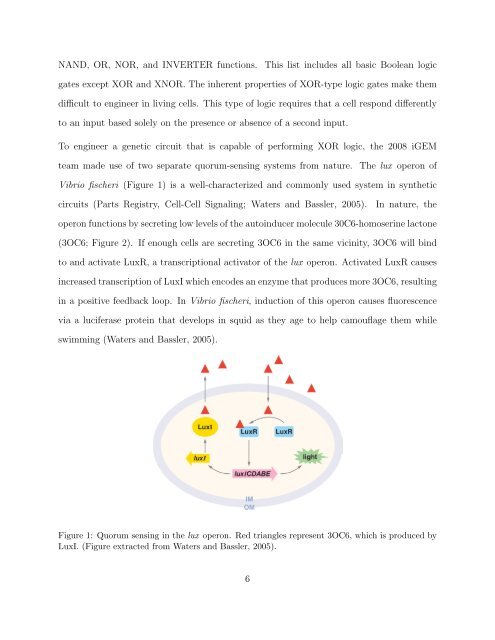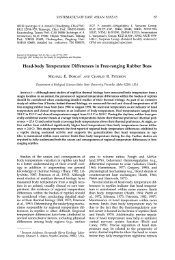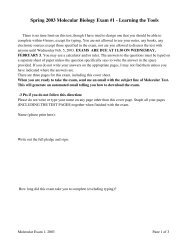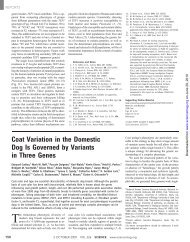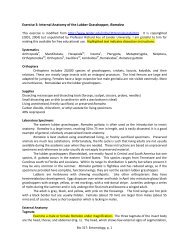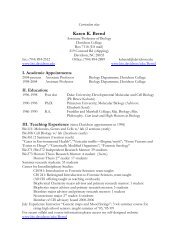Davidson College Department of Biology Honors Thesis Title ...
Davidson College Department of Biology Honors Thesis Title ...
Davidson College Department of Biology Honors Thesis Title ...
You also want an ePaper? Increase the reach of your titles
YUMPU automatically turns print PDFs into web optimized ePapers that Google loves.
NAND, OR, NOR, and INVERTER functions. This list includes all basic Boolean logic<br />
gates except XOR and XNOR. The inherent properties <strong>of</strong> XOR-type logic gates make them<br />
difficult to engineer in living cells. This type <strong>of</strong> logic requires that a cell respond differently<br />
to an input based solely on the presence or absence <strong>of</strong> a second input.<br />
To engineer a genetic circuit that is capable <strong>of</strong> performing XOR logic, the 2008 iGEM<br />
team made use <strong>of</strong> two separate quorum-sensing systems from nature. The lux operon <strong>of</strong><br />
Vibrio fischeri (Figure 1) is a well-characterized and commonly used system in synthetic<br />
circuits (Parts Registry, Cell-Cell Signaling; Waters and Bassler, 2005). In nature, the<br />
operon functions by secreting low levels <strong>of</strong> the autoinducer molecule 30C6-homoserine lactone<br />
(3OC6; Figure 2). If enough cells are secreting 3OC6 in the same vicinity, 3OC6 will bind<br />
to and activate LuxR, a transcriptional activator <strong>of</strong> the lux operon. Activated LuxR causes<br />
increased transcription <strong>of</strong> LuxI which encodes an enzyme that produces more 3OC6, resulting<br />
in a positive feedback loop. In Vibrio fischeri, induction <strong>of</strong> this operon causes fluorescence<br />
via a luciferase protein that develops in squid as they age to help camouflage them while<br />
swimming (Waters and Bassler, 2005).<br />
Figure 1: Quorum sensing in the lux operon. Red triangles represent 3OC6, which is produced by<br />
LuxI. (Figure extracted from Waters and Bassler, 2005).<br />
6


